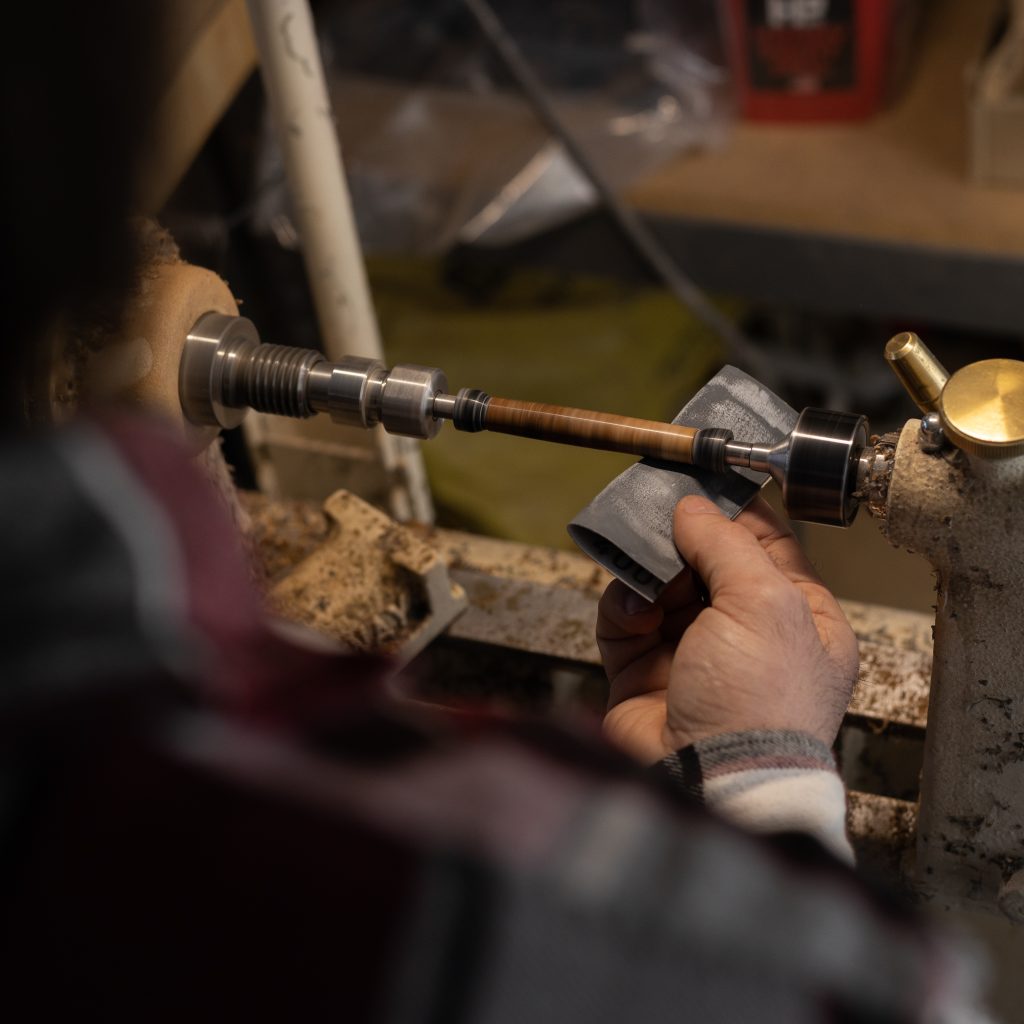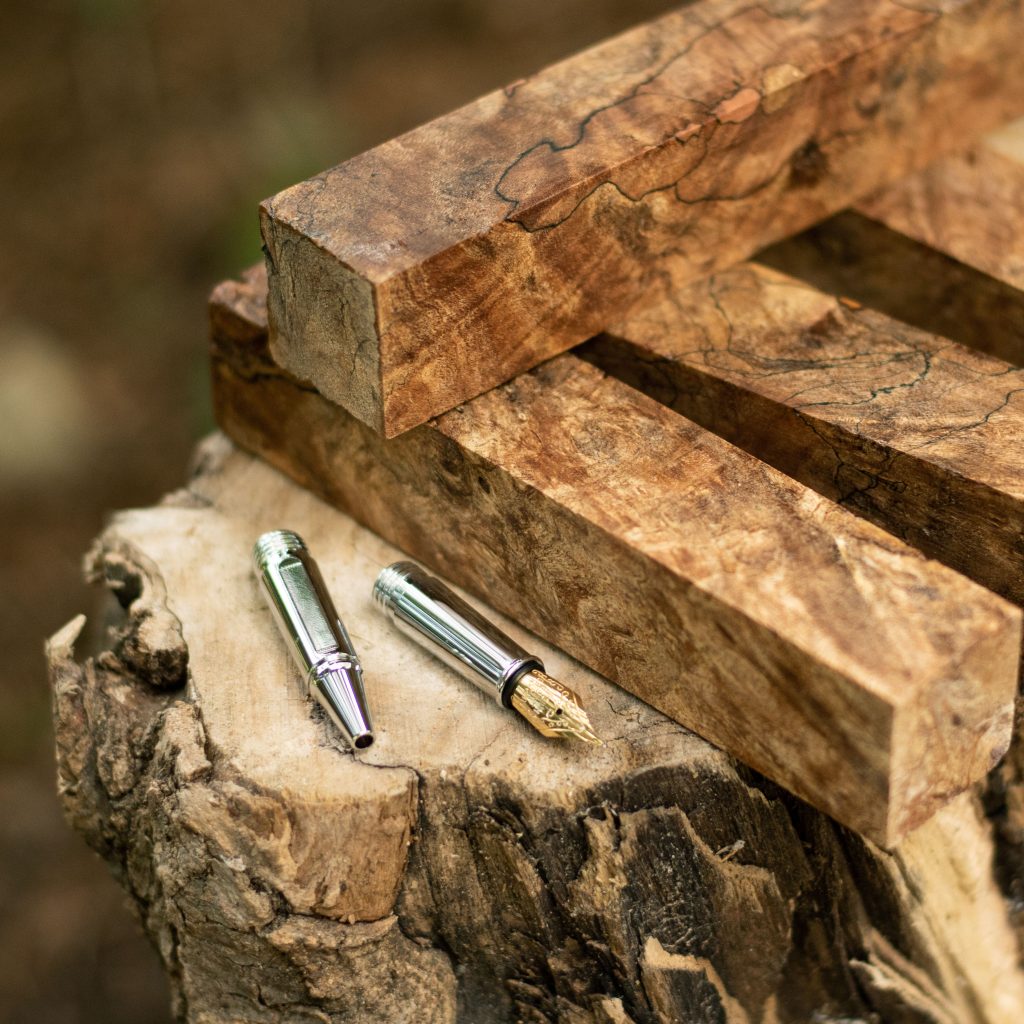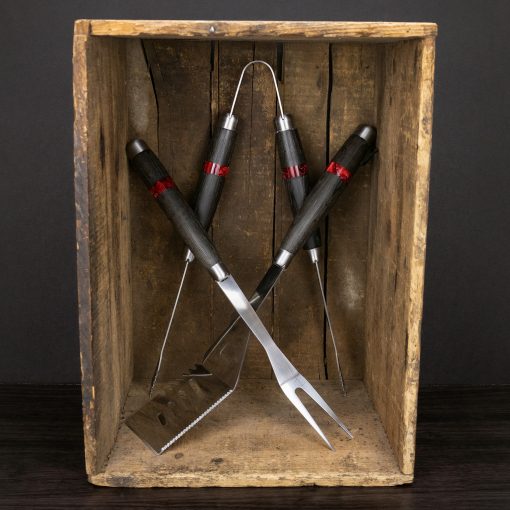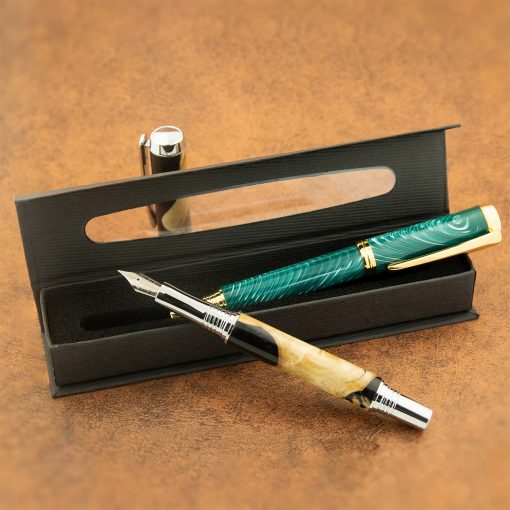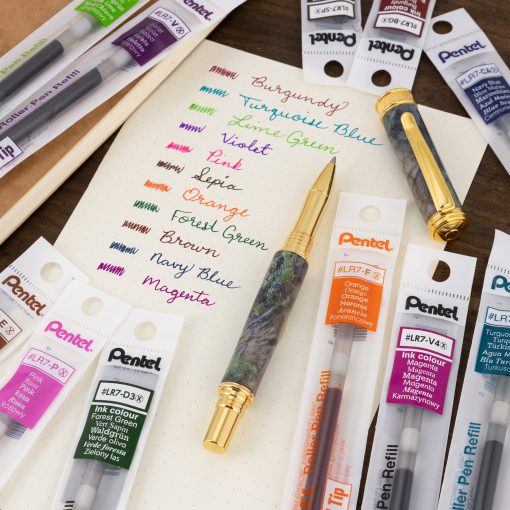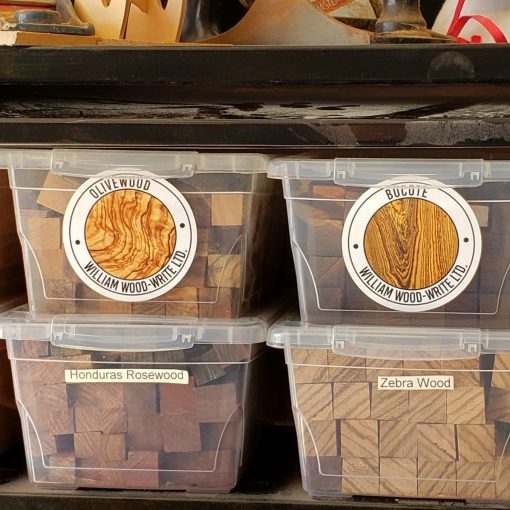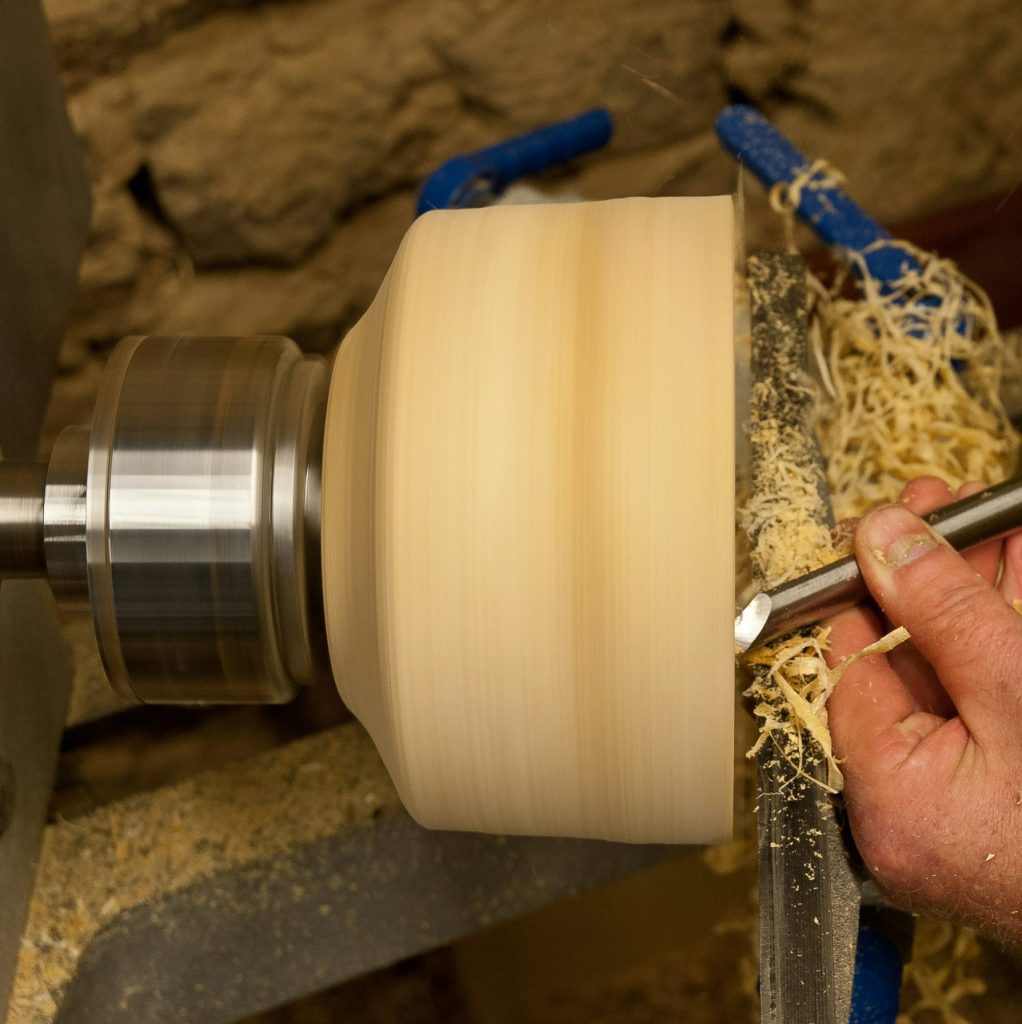
Handmade woodturned bowls are a bestseller at craft markets and make excellent gifts, but we often hear from beginner woodturners that the process seems intimidating and possibly even dangerous. The most popular fear seems to be that it will crack or come flying off the lathe, which is definitely a valid concern! When you take your time and approach bowl turning safely, you just might discover a new favourite turning project. It’s fun and practical with plenty of room for creativity.
Safety in Bowl Turning
As with everything, safety comes first when turning a bowl. The bulkiness of a bowl blank alone is a bit of a hurdle. Making sure that nothing goes wrong comes down to proper equipment, the right tools and a careful approach.
Safety tips for turning your first wooden bowl
- Speed. When you begin turning a bowl blank, especially one that is irregular in shape, run your lathe at the slowest speed until you have it balanced out.
- Tools. Using a faceplate of appropriate size with good strong screws is imperative for mounting your bowl blank. If your faceplate is too small or not screwed in tightly, there could be dangerous consequences. A faceplate should be a minimum of one third of the diameter of the bowl blank.
- Caution. Stand away to the side of the lathe when turning it on so if the blank flies off, you’re not in the line of fire.
- Protection. Wear safe and protective clothing, a face shield and a dust mask when necessary.
Choosing a bowl blank
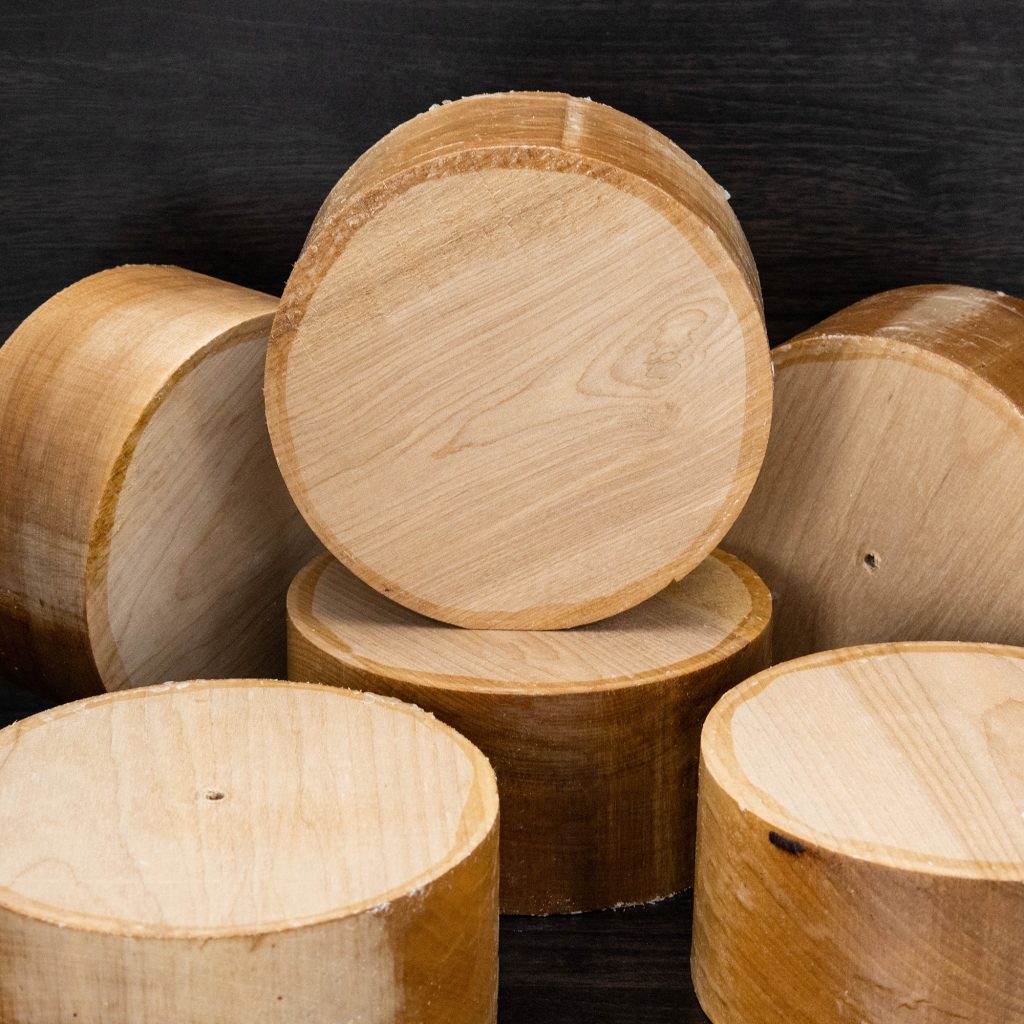
There are two kinds of “grain orientation” in bowl turning: Side grain, also called face grain, and end grain. Both have their strengths depending on what the bowl will be used for.
Most bowl blanks that you can purchase have a side grain, meaning they’re cut with the grain going across the diameter. End grain is the opposite, like on a spindle.
Side grain or face grain bowl blanks
Bowls with a face grain are sturdy because the fibers go side to side. You’ll notice while turning that you have to contend with both side grain and end grain as it rotates. This is one of the trickier parts of bowl turning, because it makes for an inconsistent surface.
End grain sections are known for tearing out, leaving gouges and a rough surface. Unfortunately, these gouges are usually too big to remedy with sanding, and the only way to deal with them is to remove material.
To prevent tearout, use a very sharp chisel or bowl gouge and use light cuts. You might even try a negative rake cutter to be extra gentle.
End grain bowl blanks
An end grain bowl blank has grain running in the same direction as pen blanks or a spindle. The surface is usually consistent, which makes it nice to turn.
The main problem with turning end grain bowls is the pith. The pith is the hard center of a tree trunk or branch that runs throughout the tree. It is hard and brittle, making turning difficult. The area around the pith is the most likely to crack, which is why many woodturners shy away from it.
Some artistic bowls are made with the pith intact, cracks and all. End grain blanks are also great for vases or taller hollow vessels.
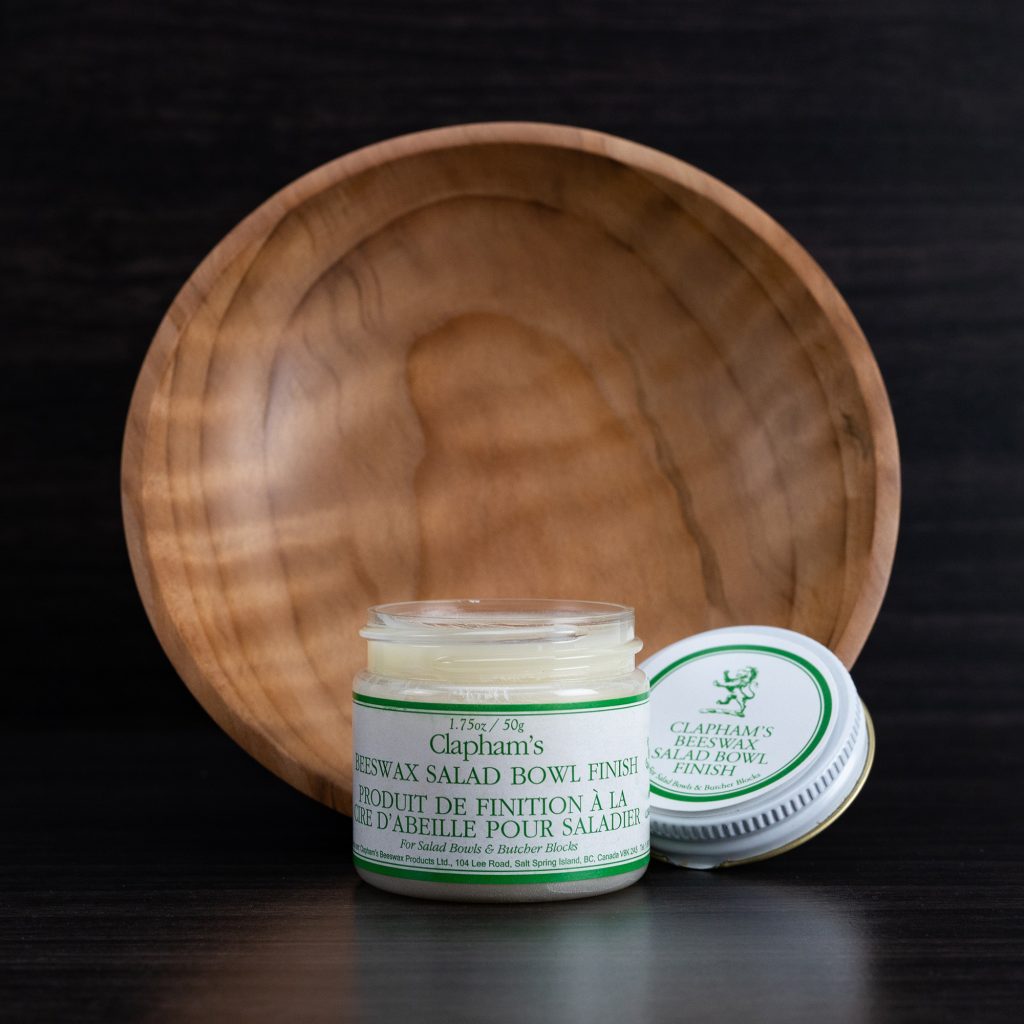
Mounting a wooden bowl blank on a lathe
Before mounting a bowl blank on the lathe, it’s a good idea to round it out as much as you can with a saw. Then comes perhaps the most important part of turning a bowl safely: The faceplate.
The faceplate is secured onto the flat surface of your bowl blank with screws and then threaded onto the spindle of your lathe.
- As mentioned, it should be one-third of the diameter of your bowl blank or bigger.
- Most faceplates come with screws, which will guide you when it comes time to replace them.
- Don’t use drywall screws because they will break. Stick to steel wood screws.
- Use screws with a tapered head, not a cap head, so they fit properly into the holes in the faceplate.
- There should be a minimum of a half inch of threaded screw in the wood, more for larger peices. Any less is too short and is a safety hazard.
- Always screw the faceplate into a completely flat surface.
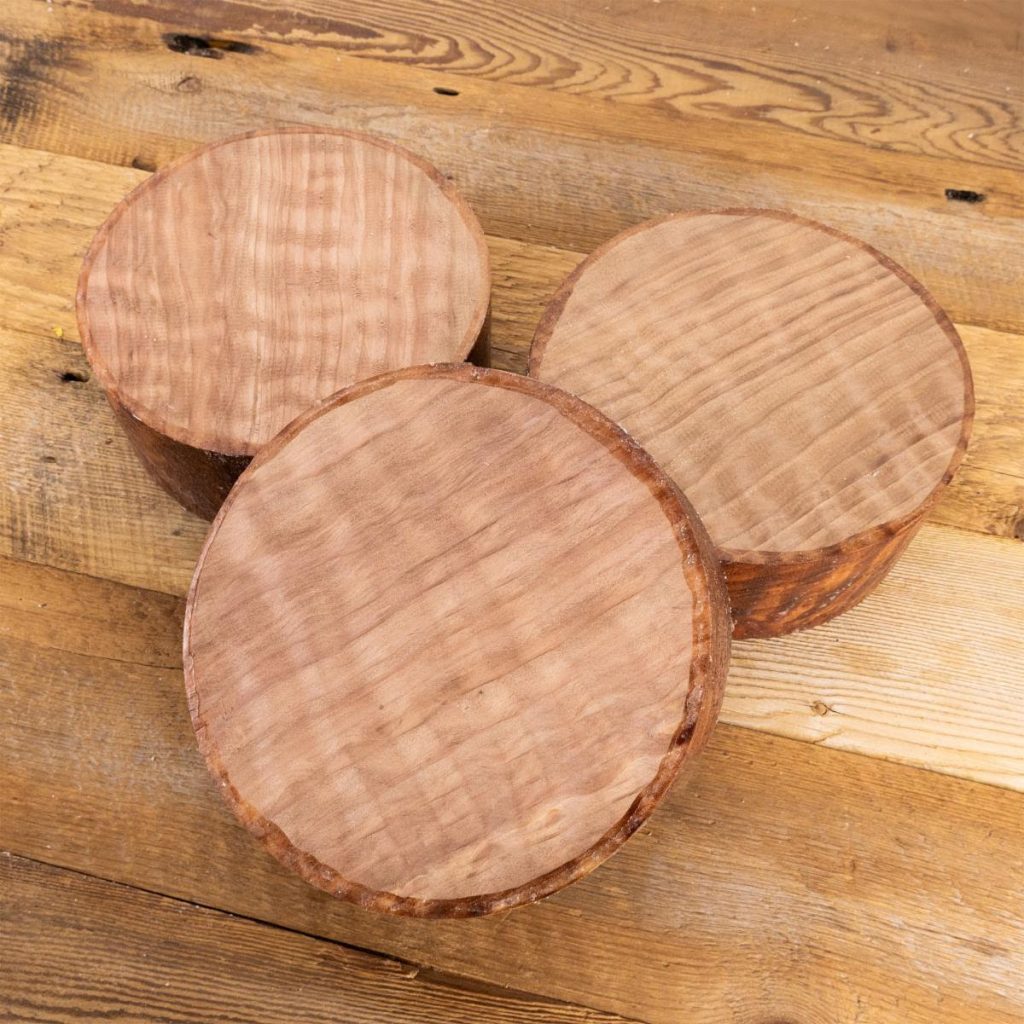
Tips for turning a wooden bowl on a lathe
Finally comes the fun part. Turning! Of course, bowl turning comes with its own set of challenges, but here are some ways to combat common bowl turning problems.
- Start your lathe at a slow speed, and gently begin to shape the outside of your bowl.
- As you cut away large swathes of wood, you’ll have to adjust the tool rest frequently. If your tool rest is one inch away from the wood, it’s time to reset it.
- While turning the inside of your face grain bowl, cut “downhill” from rim to center. For the outside, cut “uphill” from base to rim.
- Use your bowl gouges for shaping the inside and outside of the bowl, and use a scraper for getting rid of roughness and tearouts.
- Outside digital calipers are excellent for making sure the walls of your bowl are a consistent thickness.
- Remember to use a food-safe finish if your bowl will be used for eating.
From there, it’s all about practice! Give it a try with some small, inexpensive bits of wood you have lying around to get the hang of it. You won’t regret it!
Woodturning in Canada
Whether you’re ready to turn your first bowl, perfect your custom pens or everything in between, we have your woodturning materials covered at William Wood-Write. Check out our huge selection of exotic wood, handmade specialty pen blanks you won’t find anywhere else and our awesome weekly specials. And if you’re looking for inspiration or tutorials, take a look at our YouTube channel.
